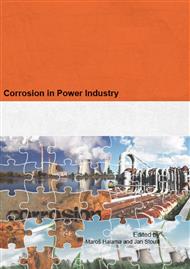p.3
p.11
p.23
p.31
p.41
p.49
p.59
p.63
Effect of Humidity on Selective Surface of Solar Absorber Plates
Abstract:
Selective layers Al2O3-Ni were prepared by electrochemical way applying anodic oxidation of aluminium and electrolytical colouring. Anodic oxidation of aluminium was realised in sulphuric resp. phosphoric acid and colouring was carried out under periodic reverse current using different colouring electrolytes on nickel basis. The selective layers were studied and analysed with diverse methods before and after exposition to humidity effect. A way of the selective layer preparation is decisive to the final reaction with humidity and so to degradation of the material.
Info:
Periodical:
Pages:
11-19
Citation:
Online since:
December 2014
Authors:
Keywords:
Price:
Сopyright:
© 2015 Trans Tech Publications Ltd. All Rights Reserved
Share:
Citation:


